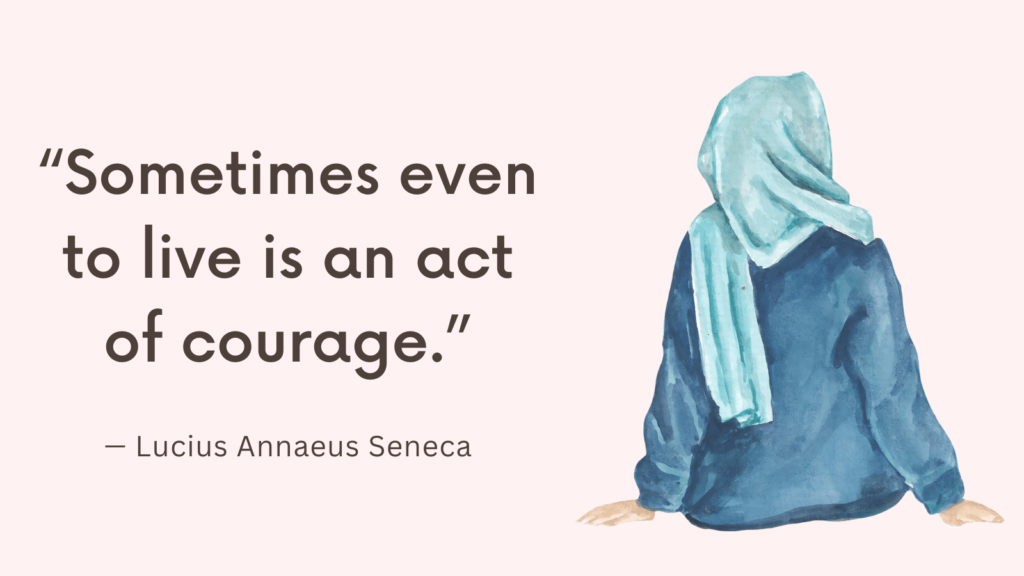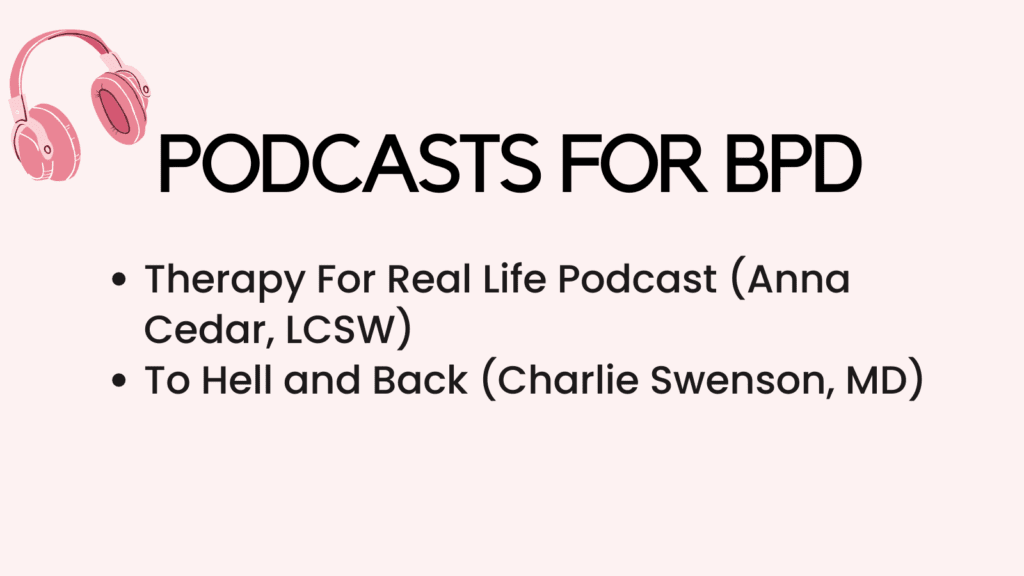In this post, you’re going to learn what a BPD episode look like.
What Is BPD?
BPD, or Borderline Personality Disorder, is a mental health condition characterized by persistent patterns of instability in interpersonal relationships, self-image, and emotions.
The Diagnostic and Statistical Manual of Mental Disorders, 5th Edition (DSM-5) is a widely used diagnostic manual that provides criteria for the diagnosis of various mental health disorders, including BPD.
According to the DSM-5, the criteria for a diagnosis of Borderline Personality Disorder include the presence of at least five of the following symptoms, which must be enduring and pervasive over time:
1. Frantic efforts to avoid real or imagined abandonment.
2. Intense patterns of unstable and intense interpersonal relationships, alternating between idealization and devaluation.
3. Identity disturbance, including unstable self-image or sense of self.
4. Impulsivity in potentially self-damaging behaviors, such as reckless spending, substance abuse, binge eating, unsafe sex, or self-harm.
5. Recurrent suicidal behaviors, threats, or self-mutilating behaviors.
6. Affective instability marked by rapid and dramatic shifts in mood, often lasting a few hours or days.
7. Chronic feelings of emptiness or intense emotional void.
8. Difficulty controlling anger, leading to frequent displays of temper, constant anger, fights, or physical altercations.
9. Transient and stress-related paranoid ideation or severe dissociative symptoms, such as feeling detached from oneself or experiencing unreality.
It’s important to note that a proper diagnosis should be made by a trained mental health professional based on a comprehensive clinical assessment.
They will consider the specific symptoms observed, their frequency, intensity, and impact on daily functioning before assigning a diagnosis of Borderline Personality Disorder.
Related: Top 7 Skills For Coping With BPD [+ BPD FREE Resources]
What Does a BPD Episode Look Like?
Borderline Personality Disorder is characterized by unstable emotions, self-image, and relationships.
Individuals with BPD often experience intense and fluctuating emotions, such as anger, sadness, or anxiety, which can lead to impulsive behaviors and difficulties in interpersonal relationships.
It’s important to note that not everyone with BPD will experience episodic or dramatic shifts in symptoms.
Each person’s experience is unique.
However, here are some commonly observed features of BPD:
1. Emotional Instability
BPD individuals may experience intense emotional responses that can be triggered by relatively minor events.
They might go from feeling intense joy to extreme sadness or anger within a short span of time.
These emotional fluctuations can be overwhelming for the person experiencing them.
2. Impulsive Behaviors
People with BPD may engage in impulsive actions, such as reckless spending, substance abuse, self-harm, or self-sabotaging behaviors like casual sex or dangerous driving.
These impulsive behaviors often occur as a way to regulate or escape from emotional distress, but they can have negative consequences and reinforce a negative cycle.
Related: Borderline Personality Disorder Support Group
3. Fear of Abandonment
Individuals with BPD may fear abandonment intensely, even in situations where it is unlikely.
This fear can lead to clingy or overly dependent behavior in relationships.
They might also react strongly to any perceived rejection or withdrawal, leading to outbursts of anger or distress.
4. Intense and Unstable Relationships
BPD individuals often struggle in maintaining stable relationships due to their intense emotions, fear of abandonment, and tendency to idealize or devalue others.
They may exhibit patterns of idealizing someone one moment and then quickly shifting to devaluing them in response to perceived rejection or disappointment.
5. Dissociation
Some individuals with BPD may experience dissociation, which refers to a sense of detachment from oneself or one’s surroundings.
This can manifest as feeling disconnected from reality, having gaps in memory, or feeling like one is observing themselves from outside their own body.
6. Self-Harm and Suicidal Behaviors
People with BPD may engage in self-harming behaviors as a coping mechanism for emotional distress.
Additionally, suicidal ideation and suicide attempts are more common in individuals with BPD than in the general population.
It is crucial to take these signs seriously and seek help.
It’s important to remember that the symptoms and experiences of BPD can vary widely among individuals.
Additionally, not everyone with BPD will experience all of these symptoms, and severity can also differ.
Related: Emotional Permanence: Top 6 Ways to Cope (+FREE Resources)
How to Cope With a BPD Episode?
Living with Borderline Personality Disorder (BPD) can present challenges, especially during episodes of heightened emotional distress.
However, there are scientifically-supported strategies that can help individuals cope more effectively during these periods.
1. Validate your emotions
During a BPD episode, it’s vital to acknowledge and validate your emotions.
Avoid self-judgment or self-blame; instead, recognize that your feelings are valid responses to the situations you are experiencing.
Remember, emotions, even intense ones, are a normal part of being human.
2. Practice grounding exercises
Grounding exercises can help bring you back to the present moment and reduce the intensity of emotional turmoil.
Techniques like deep breathing, progressive muscle relaxation, or engaging your senses (e.g., identifying five things you can see, four things you can touch, three things you can hear, two things you can smell, one thing you can taste) can be helpful in grounding yourself during an episode.
Related: Top 10 BPD Books To Help You Cope With Borderline Personality Disorder
3. Utilize distress tolerance skills
Distress tolerance skills aim to help you cope with overwhelming emotions that arise during BPD episodes.
These skills include activities such as distracting yourself with hobbies or interests, self-soothing techniques (e.g., taking a warm bath, listening to soothing music), or using healthy coping mechanisms like exercise or journaling.
4. Engage in mindfulness practices
Mindfulness-based techniques can increase awareness of the present moment, reduce impulsivity, and improve emotional regulation.
Regularly practicing mindfulness meditation or incorporating mindful activities into your daily routine, such as mindful eating or walking, can contribute to overall emotional well-being.
5. Practice effective communication
During a BPD episode, it can be challenging to communicate your needs effectively.
Learning assertive communication skills can help you express your feelings and thoughts in a clear and respectful manner.
This can minimize misunderstandings, reduce interpersonal conflicts, and strengthen relationships.
6. Seek social support
Having a supportive network of people who understand your condition and are willing to offer a listening ear or provide assistance is crucial.
Consider involving trusted friends, family members, or participating in support groups where you can share experiences, gain insights, and receive encouragement.
Related: Borderline Personality Disorder (BPD) Resources (Information, APPS, Podcasts, TED Talks, Books)
7. Develop a crisis plan
Creating a crisis plan when you are not in an episode can be invaluable during times of distress.
Work with your mental health professional to develop a personalized plan that outlines coping strategies, contact information for emergency services, and trusted individuals who can offer support in critical situations.
8. Maintain a routine and self-care practices
Establishing a structured routine and prioritizing self-care can provide stability and promote emotional well-being.
Ensure you engage in activities that promote physical health, get sufficient sleep, practice good nutrition, and dedicate time to hobbies or relaxation techniques that bring you joy.
9. Consider therapy options
Various evidence-based psychotherapies, such as Dialectical Behavior Therapy (DBT), have shown efficacy in treating BPD.
These therapies can help enhance emotional regulation skills, develop coping mechanisms, and improve interpersonal effectiveness.
Working with a trained therapist can provide valuable guidance and support throughout your journey.
How to Help Someone Experiencing a BPD Episode?
Watching a loved one go through a Borderline Personality Disorder (BPD) episode can be distressing and challenging.
1. Educate yourself about BPD
Understanding the symptoms, triggers, and challenges faced by individuals with BPD is crucial in providing effective support.
Read reputable sources, consult mental health professionals, or attend educational workshops to gain insight into the disorder.
2. Practice empathy and validation
During a BPD episode, it’s essential to validate the individual’s emotions and avoid judgment.
Let them know that their feelings are valid and understandable given their circumstances.
Demonstrate empathy by being present, attentive, and non-judgmental, as it can enhance their sense of safety and acceptance.
Related: How to Love Someone with BPD? Top 9 Suggestions
3. Encourage professional help
Encourage the person to seek professional assistance from a mental health professional who specializes in treating BPD.
Suggest therapy options such as Dialectical Behavior Therapy (DBT), which has shown effectiveness in managing BPD symptoms. Offer to help them find a suitable therapist or accompany them to appointments if needed.
4. Promote self-care practices
Encourage the individual to engage in self-care activities that promote emotional well-being.
This could include practicing mindfulness exercises, engaging in physical activities, getting adequate rest, maintaining a balanced diet, or pursuing hobbies that bring joy and fulfillment.
5. Maintain healthy boundaries
Establishing and communicating clear boundaries is essential in supporting someone with BPD.
Communicate your limits and expectations while remaining supportive, understanding, and compassionate.
Setting healthy boundaries helps protect your own well-being while still offering support.
Related: Best 20 Tips On Dating Someone With BPD Without Becoming A Caretaker
6. Learn and utilize de-escalation techniques
During a BPD episode, emotions can escalate rapidly.
Learning de-escalation techniques can help diffuse tense situations.
These techniques may involve actively listening, using a calm and soothing tone, validating their emotions, and encouraging them to take breaks or engage in grounding exercises.
7. Encourage open communication
Promote open and honest communication by creating a safe and non-judgmental environment.
Encourage the person to express their thoughts and feelings, actively listen, and validate their experiences.
Avoid minimizing their emotions or offering unsolicited advice; instead, focus on being present and supportive.
8. Offer distractions
During intense emotional episodes, distractions can help redirect attention and provide temporary relief.
Suggest engaging in activities the person enjoys, such as watching a movie, listening to music, going for a walk, or participating in creative pursuits.
Distractions can serve as a coping mechanism to manage overwhelming emotions.
Related: Saying No To Someone With Borderline Personality Disorder
9. Be patient and understanding
BPD episodes can fluctuate in intensity and duration.
It is important to be patient and understanding, recognizing that recovery takes time.
Avoid taking their words or actions personally, and remind yourself that their emotions are not a reflection of your relationship or your efforts to support them.
10. Seek support for yourself
Supporting someone with BPD can be emotionally challenging.
Ensure you have your own support network to rely on.

Conclusion
Recovery from BPD is possible, but it requires commitment, perseverance, and ongoing treatment.
By learning healthy coping mechanisms, improving emotional regulation, and developing a solid support system, individuals with BPD can experience significant improvement in their lives.



![BPD Support Groups [Online & In-Person]](https://ineffableliving.com/wp-content/uploads/2022/09/Borderline-Personality-Disorder-Support-Group-1024x576.png)